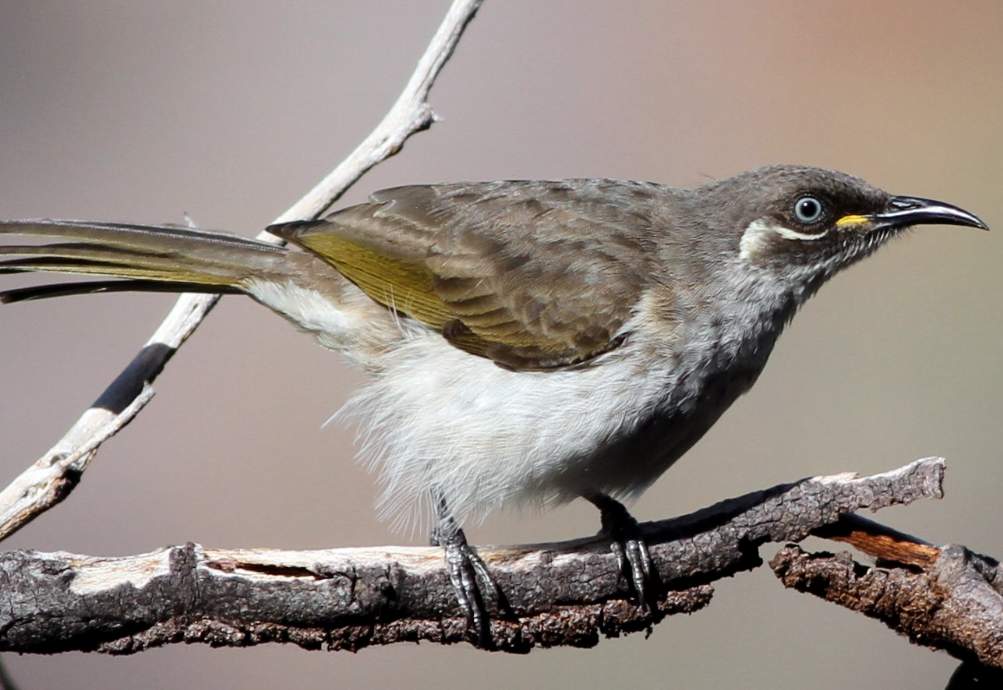The Olive Whistler (Pachycephala olivacea) of the upland shrubbery replaces the Red-lored and Gilbert’s Whistlers in cool, moist climates. It belongs to the family Pachycephalidae. Along the summit ridges of the Great Dividing Range just north of the Hunter River, it is restricted to temperate rainforests of Antarctic beech Nothofagus. The species spreads in sclerophyll glades along the coasts of Victoria, Tasmania, and far southeastern South Australia.

In the Australian alps, where they reach urban Melbourne and Canberra during the winter, they are sedentary birds except for dispersing young of the year. The Olive Whistler mainly picks up insects from the ground, hopping along and climbing branches to catch insects (primarily beetles and weevils). When they are not breeding, they feed alone and are quiet. When breeding, males sing intermittently throughout the day. It is the only bird in Australia that has so many dialects.
There are many variations on the theme of double-note long-drawn whistles in the Hunter Valley; others utter resonant up- and down-slurred whistles, reminiscent of Gilbert’s Whistler whistles; still, others give explosive whistles along the south coast and in Tasmania. In terms of the geographical races of Olive Whistlers, there is only partial concordance between these variations. It is also called Olivaceous Whistler and Olive Thickhead. The size of the olive whistle measures 200–210 mm in length. IUCN’s Red List considers it of least concern, but habitat fragmentation and feral cats and foxes make it vulnerable in New South Wales
A male Olive Whistler has a deep grey crown and hind neck, olive-brown upper parts, and a slight rufous wash on the rump; the wing and tail feathers are dull citrines. There is a dull white throat flecked with grey; there is a mid-grey band across the upper breast; the rest of the underparts are ochreish buff with yellow undertail covers. A ruby-colored eye. The bill is black. The feet are black-brown in color.
A female is similar to a male; mainland races tend to be smaller and duller. Tasmanians look immature, but their heads are grayer, and they have red eyes and a black bill. In mature birds, the upper parts, including the crown, are uniformly dark olive-brown; the underparts, however, are duller and lack a gray breast band. The eyes and bill are dull brown. The wing coverts of juveniles are rufous; the tail feathers are pointed.
Olive Whistler calls low, plaintive whistles. The song consists of two main long-drawn whistles in the northeast, the second often much lower in pitch, peeee-pooo; a resonant series of rising and falling whistles in alps, weee-e-tchow; and a slow, rising cheer-ritty with whipcrack effect in Tasmania. Also monotonous, repeated, swell in a jiff, jiff, jiff as a territorial call.
Nesting and breeding occur in September and January. The nest is made up of a loosely constructed cup of fine twigs and grass stems lined with finer, similar material. It is placed in low forks of branches of trees, shrubs, or dense clumps of grass. This bird lays two or three eggs, pale buff with brown and gray spots, measure 28–19 millimeters, and have an oval shape.
Nowhere common in upland forest shrubberies of the southeast, north to Mistake and McPherson Ranges, Qld, south to Tasmania, and southwest on the coast to Robe-Kingston, SA. There are three races: one in the Southeastern Mainland; one in the Hunter River region of NSW; and one in Tasmania and the Bass Strait Islands.
Read More: The Shy Red-lored Whistler







